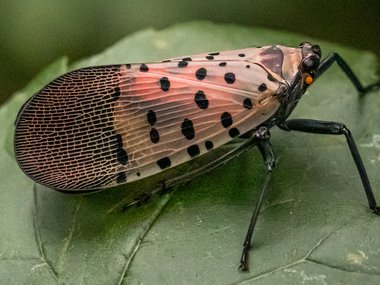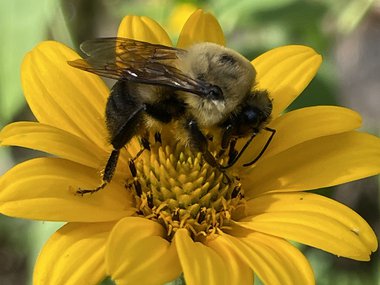Question Your World: Can Nature Help Stop the Spread of Spotted Lanternflies?
The spotted lanternfly, first detected in the U.S. in 2014, is an invasive insect that threatens vineyards, ornamentals and forestry. When they munch on tree bark from a specific species called the tree of heaven, they become toxic too, by sequestering the bitter-tasting compounds from the tree into their own bodies! This added variable to an already invasive species could lead to a sizable ripple effect in the ecosystem.
Biological control efforts have been encouraged by experts; by now you’ve probably seen a lot of information telling the public to kill these insects when discovered. So, other than humans squishing them when we occasionally see them, is there any other way to potentially counter these quickly reproducing-fast spreading bugs? There just might be!
A recent study investigated whether generalist arthropod predators, like insects or spiders, could effectively prey on lanternflies, even those that sequestered toxins. Contrary to expectations, predatory arthropods showed no aversion and readily consumed lanternflies regardless of their host plant diet.
Researchers tested ten predator species, finding that the spined soldier bug, the Carolina mantis, and the Chinese mantis were especially effective in reducing lanternfly numbers. These results suggest that conserving or augmenting such predators could become part of a sustainable control strategy, potentially lowering reliance on chemical treatments.
The authors emphasize that integrating predators into broader integrated pest management programs could enhance long-term control without the strain of relying exclusively on hazardous chemicals or other nature-disrupting methods. However, they caution that field effectiveness may vary due to predator abundance and pesticide exposure.
The study highlights the promise of predator-based control but also underscores the need for continued research in real-world conditions. Another study that monitored big brown and eastern red bat guano found that they could detect lanternfly DNA, showing the potential for using guano-based pest monitoring to detect the presence of lanternflies in an area. Overall, these findings provide hope for developing lower-impact, ecologically sound management approaches for this destructive invasive pest.
In the meantime, if you see a lanternfly, squish it!


